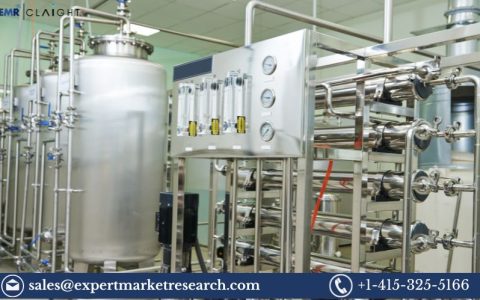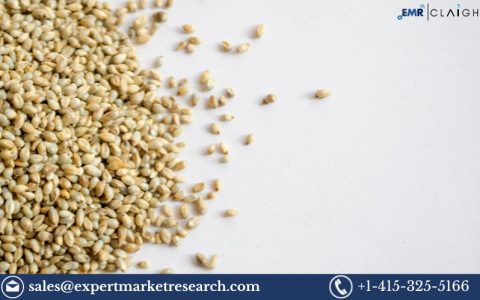
“Antimicrobial Additives Market Report by Product Type (Inorganic Antimicrobial Additives, Organic Antimicrobial Additives), Application (Plastic, Paints and Coatings, Pulp and Paper, and Others), End Use Vertical (Construction, Automotive, Healthcare, Food and Beverage, and Others), and Region 2024-2032”. offers a comprehensive analysis of the industry, which comprises insights on the global antimicrobial additives market growth. The global market size reached US$ 5.8 Billion in 2023. Looking forward, IMARC Group expects the market to reach US$ 11.1 Billion by 2032, exhibiting a growth rate (CAGR) of 7.3% during 2024-2032.
Factors Affecting the Growth of the Antimicrobial Additives Industry:
- Growing Concerns About Indoor Air Quality:
With people spending more time indoors, there is a heightened awareness about the need to maintain a healthy indoor environment. Antimicrobial additives are being incorporated into heating, ventilation, and air conditioning (HVAC) systems, air filters, and interior building materials like paints and coatings to prevent the growth of mold, bacteria, and other harmful microorganisms. These additives are essential in maintaining air quality and reducing the prevalence of airborne diseases, especially in high-traffic and sensitive environments like offices, schools, and healthcare facilities. Moreover, the growing prevalence of allergies and respiratory issues linked to poor indoor air quality is catalyzing the demand for these additives. This demand is further supported by building regulations and green building standards that emphasize healthy indoor environments.
- Advancements in the Textile Industry:
The rising demand for hygienic and durable fabrics is impelling the market growth. Antimicrobial additives are used in a wide range of textiles, ranging from healthcare uniforms and bedding to sportswear and casual apparel. These additives are particularly valued for their ability to inhibit odor-causing bacteria, making them essential in sportswear and activewear. Furthermore, the growing public interest in personal hygiene and the increasing awareness about the potential of fabric surfaces to harbor pathogens is catalyzing the demand for antimicrobial textiles.
- Increasing Use in Consumer Electronics:
Manufacturers are incorporating antimicrobial additives into electronic products and accessories to reduce the buildup of bacteria and enhance user safety. This trend is not only driven by user demand but also by the competitive landscape of the electronics market, where added features like antimicrobial protection can be a key differentiator. Furthermore, in professional settings, including hospitals and food processing plants, electronic devices with antimicrobial properties are essential to maintain hygiene standards. Apart from this, the increasing purchase of consumer electronics is bolstering the market growth.
Leading Companies Operating in the Global Antimicrobial Additives Industry:
- Avient Corporation
- BioCote Ltd
- Chroma Color Corporation
- Dow Inc.
- King Plastic Corporation
- Life Material Technologies Limited
- LyondellBasell Industries Holdings B.V.
- Microban International Ltd.
- Milliken Chemical Company (Milliken & Company)
- Sanitized AG
Antimicrobial Additives Market Report Segmentation:
By Product Type:
- Inorganic Antimicrobial Additives
- Organic Antimicrobial Additives
Inorganic antimicrobial additives exhibit a clear dominance in the market due to their inherent stability and broad-spectrum effectiveness against microbes.
By Application:
- Plastic
- Paints and Coatings
- Pulp and Paper
- Others
Plastic represents the largest market segment as it is extensively used in various industries like packaging, healthcare, automotive, and consumer goods, necessitating effective antimicrobial solutions to maintain hygiene and product safety.
By End Use Vertical:
- Construction
- Automotive
- Healthcare
- Food and Beverage
- Others
Healthcare holds the biggest market share, owing to stringent hygiene requirements in hospitals, clinics, and medical equipment.
Regional Insights:
- North America (United States, Canada)
- Asia Pacific (China, Japan, India, South Korea, Australia, Indonesia, Others)
- Europe (Germany, France, United Kingdom, Italy, Spain, Russia, Others)
- Latin America (Brazil, Mexico, Others)
- Middle East and Africa
Asia Pacific dominates the market, driven by the increasing awareness about hygiene in consumer products and the growing population.
Global Antimicrobial Additives Market Trends:
The growing development of smart and responsive antimicrobial surfaces is offering a favorable market outlook. These innovative materials are designed to activate their antimicrobial properties only in the presence of microbes or certain environmental conditions, thereby reducing the overuse of antimicrobial agents and preserving their efficacy. This smart functionality is particularly appealing in healthcare settings, where controlling infection risk without contributing to antimicrobial resistance is crucial. These responsive surfaces are finding applications in medical devices, hospital furnishings, and high-touch public spaces.
Note: If you need specific information that is not currently within the scope of the report, we will provide it to you as a part of the customization.



